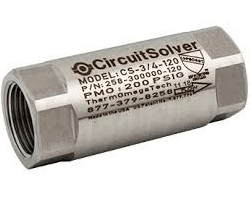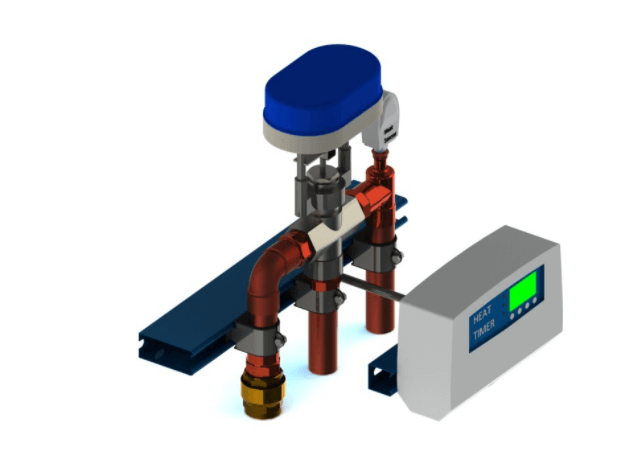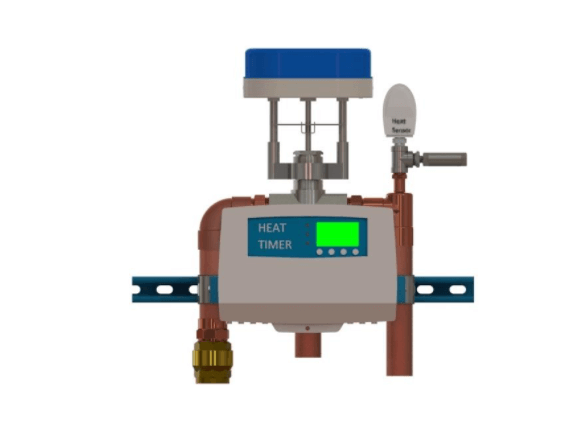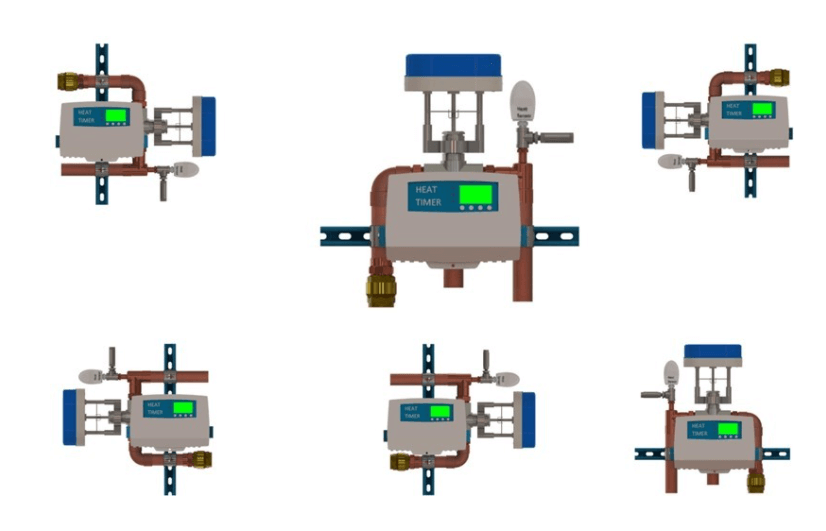Mitigate Legionella Harbors With Digital Mixing Valves
+/-2F, 24/7 recirculation, computer controlled, low head-loss, and BMS connectivity provides the plumbing industry a great opportunity to better control tempered water while mitigating legionellae harbors.
History
ASSE 1017 mixing valves are installed at the POINT OF SOURCE, meaning these are installed at the hot water source, specifically a water heater, boiler, or storage tank. The concept: take the hot water, blend it with cold water, and deliver tempered water to the building. For decades, the Thermostatic Mixing Valve (TMV) was the best solution. The TMV used either expanding wax or a bimetallic spring to regulate the amount of tempered water heading to the building.
On a side note, some digitally controlled hot water heaters are not required (by local authorities) to have an ASSE 1017 valve.
TMV limitations
Because the TMV’s control mechanism is actually located in the waterway, the TMV’s are very susceptible to water quality. Hard water, iron, manganese, chlorine, zinc-orthophosphates, and other additives foul the mechanism, making these valves less and less dependable. Everybody probably knows a facility maintenance personnel that adjusts their TMV daily. Not a great use of time.
The New Digital Mixing Valve
Not really new; for over a decade, the technology of temperature sensors, combined with computer controls and remote actuators presented the plumbing industry a much more precise and durable product. Very simply, the control mechanism has been removed from the waterway. Now, a stainless steel temperature sensor sends a signal to a computer, and the computer sends a signal to the actuator, which controls the output temperature.
+/- 2F
Digital Mixing Valves deliver +/-2F discharge temperature, and one of the strategies for this is a 24/7 recirculation line. With +/-2F, consistent tempered water is delivered throughout the building. When first installing a digital mixing valve, it sometimes takes 24 hours to balance out a building. Since theses valves are more accurate and consistent than the TMV, the hot water source can be run hotter, with industry recommendations of 140F+, and the tempered water can be delivered to the building at 110F-120F.
Balancing
The concept of a 24/7 recirc is simple, the execution is a little more complicated. The recirculation line is actually a system, where each floor needs to be balanced to ensure the water is flowing evenly across each floor and back to the mechanical room. Typically a circuit setter, built by companies like ThermOmegaTech, are used for this purpose.


Thermal Sanitizing
Many systems have a “sanitizing mode”, which allows scheduling the mixing valve to ramp the tempered water up to 140F-160F, thus ensuring the pipes are sanitized. One customer told me they regularly schedule this for 2am IN A NURSING HOME. Which begs the obvious question: what could go wrong with 160F tempered water at 2am?
We have 140F water at one of our shop sinks. If you’ve never put your hands under 140F water, give it a try; it’ll make you think twice about randomly jacking up the tempered water in a building. If you plan on “thermally sanitizing” a system, such as opening an idle building after a COVID-19 crisis, do it manually, with no tenants, and plenty of people controlling the water. Please reference all of the relevant information on-line concerning opening idle buildings.
Why We Choose Heat-Timer Components
Heat-Timer has been supplying the ETV digital mixing valves to the plumbing industry for over a decade. With that kind of experience and lessons learned, they’ve certainly learned a thing or two along the way.
Towle Whitney Upgrade
At Towle Whitney, we build systems. We’ve taken Heat-Timer’s successful ETV components, and built a plug-and-play system that’s designed for the installing contractor.



To increase the level of safety, the TWDTS PLUS series includes an optional ThermOmegaTech thermal relief valve, set 10F above the set-point. The major benefit over other safety features: the thermal relief valve works independently, and doesn’t rely on the computer.
Lower Head-Loss
Because the control mechanism is out of the waterway, it’s literally out of the way, allowing a much smoother flow than the ole TMV. A digital mixing valve can be sized based on the demand, which means it doesn’t always need to be a line-sized valve. For example, knowing that most pipes are over-sized, a 1-1/2″ valve may be adequate on a 2″ line.


Mitigate Legionellae Harbors
The combination of a 140F heat source and a 24/7 recircirculation system keeps the tempered water moving and mitigates any legionellae “harbors” in the tempered piping.
Building Management Systems / Building Automation Systems
Because the digital mixing valves are controlled with a computer, we offer the option of BMS/BAS compatibility (usually Internet, BACnet, Modbus). In our litigious society, the BMS function is great for documenting tempered temperatures, especially in a health care facility.
Multiple Configurations
To simplify the installation, especially when replacing an old TMV, the new TWDTS is available in 1″ thru 2-1/2″, and mounted on strut. A TWDTS’s piping and controller can be easily changed in the field into six different piping orientations to match the existing piping.


Conclusion
Although more expensive to purchase than a TMV, the long term benefits of the new digital mixing systems far outweigh the ole TMV’s. And the biggest benefit may be the mitigation of legionellae harbors.
The TWDTS series are built, programmed, and tested in New Hampshire. We thank you for reading the article, and any feedback is appreciated.
